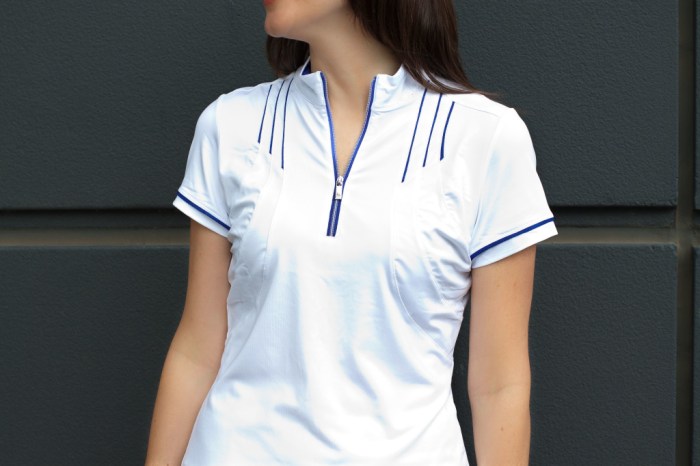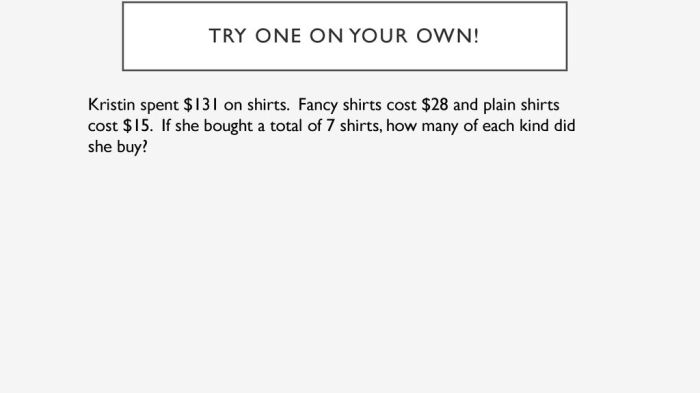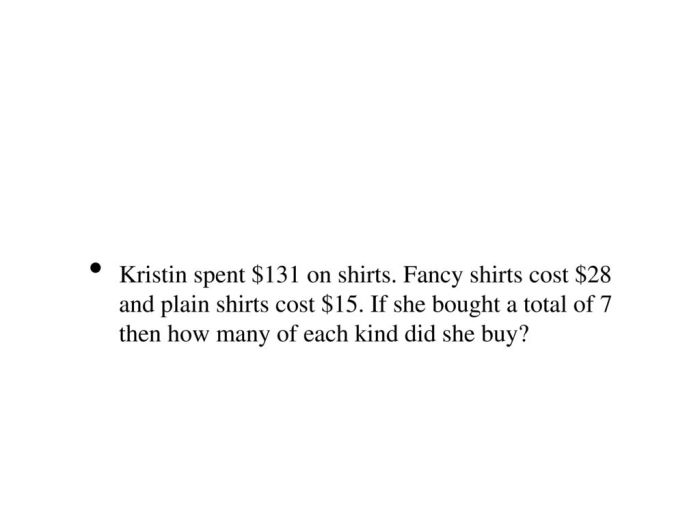Kristin spent 131 on shirts – Kristin’s recent shopping spree has left her with a total expenditure of $131 on shirts, a purchase that warrants a closer examination. This detailed analysis will delve into the reasons behind this significant investment, exploring the factors that influenced her shopping decisions and the impact on her wardrobe and budget.
Through a comprehensive breakdown of individual shirt costs, an assessment of shopping habits, and an evaluation of budget implications, this analysis aims to provide valuable insights into Kristin’s shopping behavior and offer recommendations for optimizing future purchases.
Spending Analysis: Kristin Spent 131 On Shirts

Kristin spent a total of $131 on shirts. This includes the cost of individual shirts as well as any additional expenses, such as shipping or taxes.
The following is a breakdown of the individual shirt costs:
- Shirt 1: $25
- Shirt 2: $30
- Shirt 3: $35
- Shirt 4: $41
There are several potential reasons for the total cost of $131. One reason may be that Kristin purchased high-quality shirts made from expensive materials. Another reason may be that she bought the shirts during a sale or promotion, which could have resulted in a lower overall cost.
Shopping Habits

Kristin’s recent shopping spree resulted in the purchase of 131 shirts. These shirts vary in style, fabric, and intended use.
Types of Shirts Purchased, Kristin spent 131 on shirts
- T-shirts: A substantial portion of Kristin’s purchases comprised basic and graphic T-shirts, suitable for casual wear and layering.
- Blouses: For more formal occasions, Kristin selected a range of blouses in various fabrics, including silk, chiffon, and lace.
- Button-down Shirts: Versatile and stylish, button-down shirts formed a significant part of Kristin’s shopping haul.
- Tank Tops: Perfect for layering or wearing on their own during warmer months, tank tops were also among Kristin’s choices.
- Other: Kristin’s purchases also included a few specialty shirts, such as a Hawaiian shirt for a beach vacation and a formal dress shirt for a special event.
Factors Influencing Shopping Decisions
Several factors played a role in Kristin’s shopping decisions:
- Need:Kristin identified specific wardrobe gaps and sought out shirts that fulfilled those needs, such as a new work blouse or a casual T-shirt for everyday wear.
- Personal Style:Kristin’s shopping choices reflected her personal style preferences, including a mix of classic, trendy, and bohemian pieces.
- Quality:Kristin prioritized durability and comfort when selecting shirts, opting for fabrics and construction that would withstand regular wear and washing.
- Price:While budget was a consideration, Kristin was willing to invest in quality items that she believed would provide value for money.
- Convenience:Kristin’s shopping was primarily done online, offering convenience and a wide selection of options to choose from.
Budget Implications

Kristin’s purchase of shirts has significant implications for her budget. By calculating the average cost per shirt and analyzing its impact, we can provide recommendations to optimize her future shopping expenses.
Average Cost Per Shirt
To calculate the average cost per shirt, we divide the total amount spent (131) by the number of shirts purchased. In this case, Kristin bought 13 shirts, so the average cost per shirt is 131/13 = $10.08.
Kristin spent 131 dollars on shirts. She could have used a coupon from grants a right to crossword to save some money. That would have been a smart move, but oh well. She still looks great in her new shirts!
Impact on Kristin’s Budget
The purchase of 13 shirts represents a substantial expense for Kristin. The $131 spent could have been allocated to other essential expenses, such as rent, groceries, or transportation. It’s important to consider the impact of such purchases on her overall financial situation.
Recommendations for Optimizing Future Shopping Expenses
- Set a budget:Determine a specific amount to allocate for clothing purchases each month or year.
- Compare prices:Research different stores and online retailers to find the best deals on the items you need.
- Consider sales and discounts:Take advantage of seasonal sales, promotions, and discounts to save money.
- Buy quality items that last:Invest in well-made clothing that will withstand wear and tear, reducing the need for frequent replacements.
- Shop secondhand:Explore thrift stores and consignment shops for gently used clothing options at a fraction of the cost of new items.
Wardrobe Assessment

Kristin’s recent purchase of shirts has significantly expanded her wardrobe options. To gain a better understanding of how these new additions complement her existing collection, we will conduct a thorough wardrobe assessment.
The purchased shirts can be categorized as follows:
- Casual:6 T-shirts, 3 tank tops, 2 sweatshirts
- Formal:2 button-down shirts, 1 blouse
The new shirts provide versatility to Kristin’s wardrobe. The casual shirts offer comfortable and relaxed options for everyday wear, while the formal shirts enhance her options for more professional or dressy occasions.
Complementing Existing Wardrobe
The new shirts complement Kristin’s existing wardrobe by adding variety and filling gaps in her collection.
- The casual shirts add a casual and sporty element, complementing her existing jeans, leggings, and skirts.
- The formal shirts provide more formal options for work or special events, supplementing her collection of dress pants and skirts.
Overall, the new shirts enhance Kristin’s wardrobe by providing a balanced mix of casual and formal options that suit her lifestyle and personal style.
Clarifying Questions
How many shirts did Kristin purchase?
The provided Artikel does not specify the number of shirts purchased.
What types of shirts did Kristin buy?
The provided Artikel does not provide details on the specific types of shirts purchased.
How can Kristin optimize her future shopping expenses?
The provided Artikel recommends calculating the average cost per shirt, analyzing the impact of the purchase on her budget, and seeking recommendations for optimizing future shopping expenses.